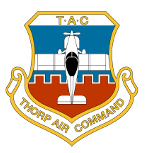bfinney wrote:
Here is my installation of an Andair valve using their shaft extension. This makes it very easy to shut off the fuel in a normal sitting position. Previously I had a valve with no extension on the handle and if I would have needed to shut off the fuel in flight I would have then had to do an unusal attitude recovery.

The fitting on top of the valve is a male pipe thread to a pipe nipple to the tank, the bottom fitting is an 90 angle -6 AN flare to a -6 hose, I have more than 2 90 elbows in my gravity system. I did do a flow test with the nose at a climb angle and my minimum fuel level is 5 gallons for 150% full throttle fuel flow.
The purple disk you see on the shaft near the valve is an adapter that allows you to reposition the handle, if I had not used it the ON position would have been 90 degrees from where it is now. There is also a universal coupling on the valve to allow for misalignment of the knob mount.
This was after I had just installed new carpet and the instrument panel has not been re-installed.
My valve hangs from the tank also... it's an inexpensive teflon-seated brass ball valve. Very light & smooth operating, even after 26 years. I have a home-made extension. My belief is that the problems related to directly mounting the valve to the tank outlet that have been reported over the years stem from two issues. Number one is the use of the heavy conventional brass plug valves that were (are) used on many aircraft. They can get very stiff to operate, creating a lot of stress on the tank flange when opening or closing, and the weight contributes to the extra stress, especially if the fuel line isn't routed nice & short to the firewall penetration where is is supported. Light & simple is usually always good on an airplane. BTW, brass is used on fuel systems for many airplanes - the aforementioned brass plug valves are an example. Strength or brittleness is really not too much of a consideration, IMHO. Brass is stronger than the aluminum used to fabricate most valves & fittings, in tensile strength... the main issue is extra weight. As an aside, I believe that my little brass valve, which by the way is used by many experimental builders, is probably actually lighter than that nice Andair valve.







